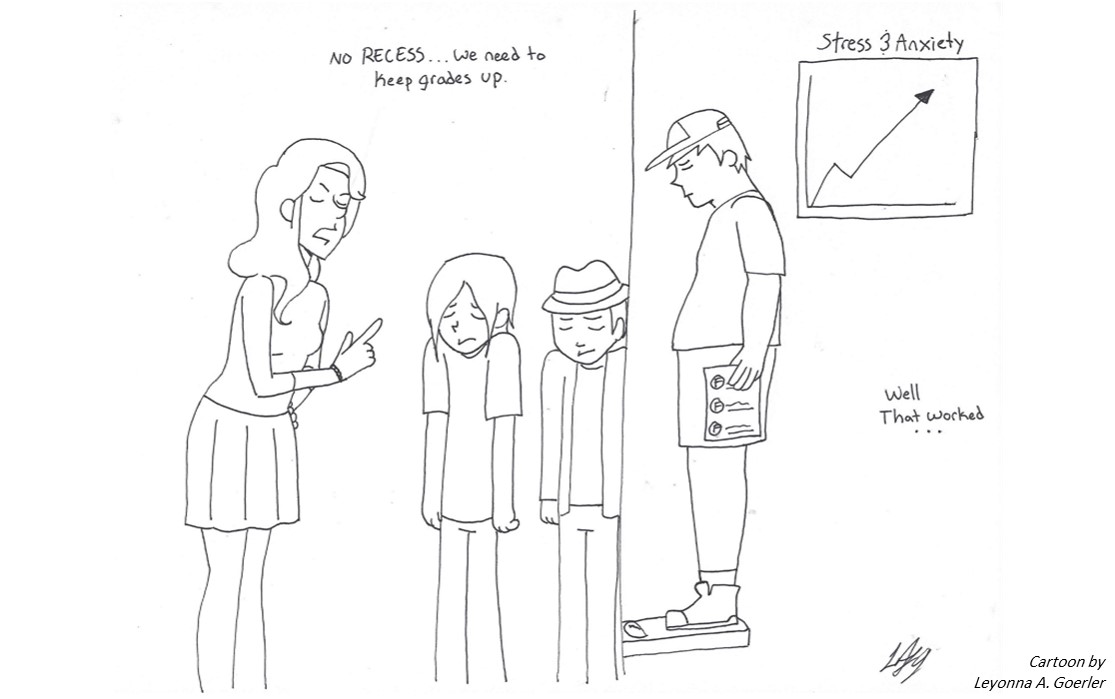Usually when people hear the word recess, they think of small children playing on the monkey bars or running around outside, but what could recess mean for high schoolers?
Recess could be a time to connect with peers, study in the library, increase physical activity, finish incomplete work, and meet for club activities.
School has a major impact on students’ mental and physical health since they spend almost half of their waking hours there. Considering that mental health issues are not uncommon, and the majority of youth don’t get enough exercise, incorporating a recess into the school day could have major benefits.
According to the Center for Disease Control and Prevention, In 2021, more than 4 in 10 (42%) students felt persistently sad or hopeless, nearly one-third (29%) experienced poor mental health, and more than 1 in 5 (22%) students seriously considered attempting suicide.
Although there are many contributing factors to this mental health crisis, allowing a mid-day break during the school day will let students relax and spend time with friends, which can decrease stress and improve their overall mood.
Students spend so much time in structured and highly controlled environments that they often lose touch with their sense of freedom, creativity, and community. Making recess a part of the school day can help restore those vital aspects of learning that a classroom experience cannot provide.
Another study by the CDC found that elementary school students who get recess have higher test scores, grades, and attendance. The students also showed improved classroom behavior, concentration, and memory.
Not including recess further contributes to the mental health crisis by causing students to feel overwhelmed and burnt out.
Although in-class games and social activities have benefits, these are still structured activities that don’t give students an opportunity to enjoy what they want to do. There is also a limit to what activities can be done in a classroom.
For example, students cannot go to club meetings, play basketball or visit friends in other classes if they are confined to one space.
Furthermore, researchers at the National Library of Medicine conducted a study in 2017 where they measured the relationship between physical activity and anxiety levels in students. The results showed that there was a positive correlation between excess inactivity and feelings of anxiety.
Considering that students remain sedentary throughout the school day with the exception of physical education classes, it is logical to conclude that school is contributing to higher anxiety levels in students by forcing them to remain seated and contained.
Recess gives students the opportunity to release their pent up mental energy through physical exercise which decreases anxiety.
Additionally, more than 75% of U.S. youth do not meet the recommended daily 60 minutes of moderate-to-vigorous physical activity, according to statistics in the National Library of Medicine.
Recess has potential to battle this issue by encouraging physical activity among students which can improve their health and decrease anxiety.
Both the American Academy of Pediatrics and the Centers for Disease Control and Prevention have also issued statements on the importance of school recess and recommend that “all children have 20 min or more of daily recess.”
Schools could integrate recess by reserving the gym and football field for activities like basketball, football, or soccer. The library could serve as a study hall, and the learning lab could be a space for club meetings.
All of these areas can be easily supervised by teachers and staff if necessary.
Having a recess is possible, and it is crucial for students’ mental and physical health.






